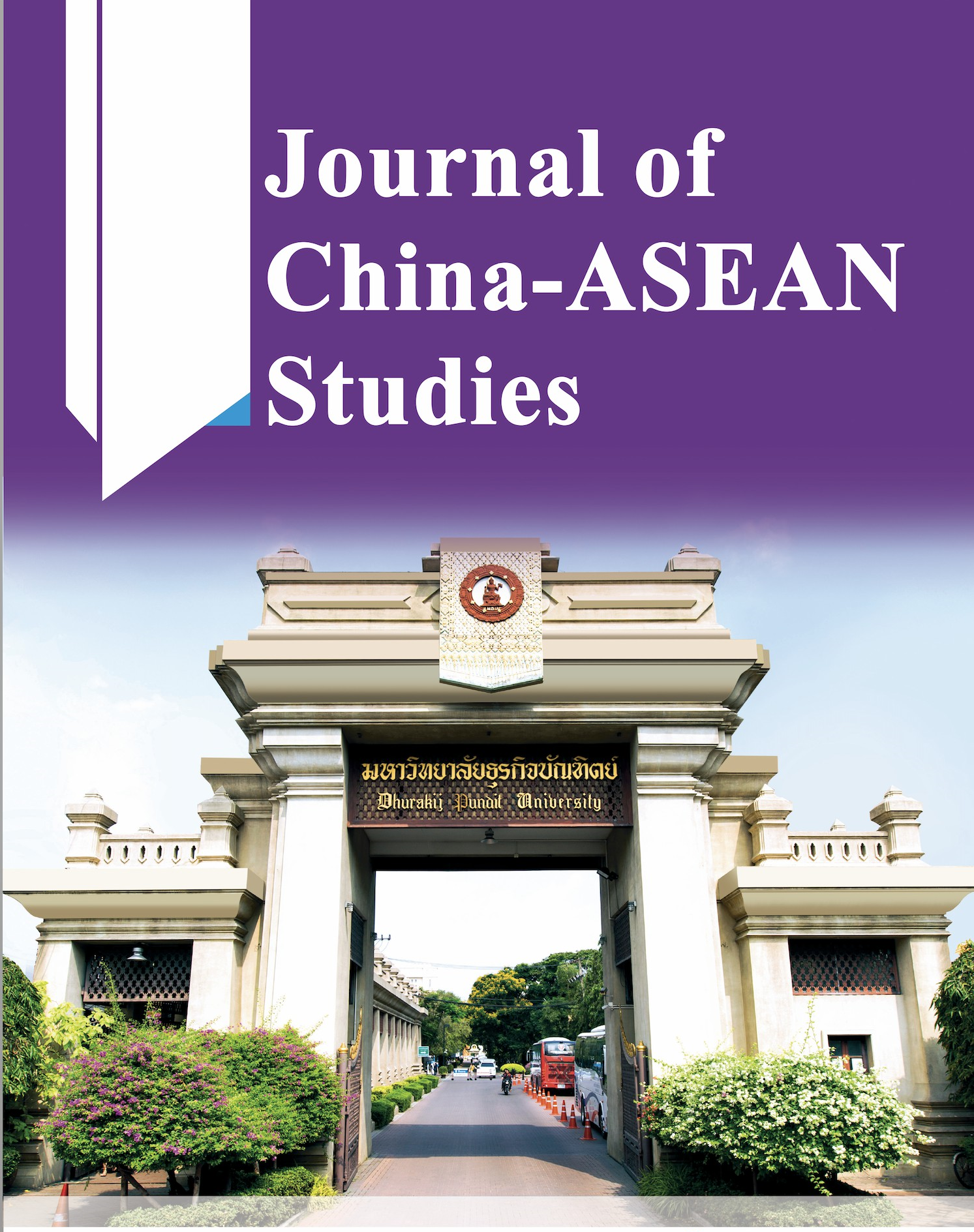Secondary School Principals’ Leadership Behavioral Characteristics that Inspire Teachers’ Gratitude in Taiwan
Keywords:
Leadership Behavioral, Teachers’ Gratitude, Goodwill, Behavioral Characteristics, Return FavorsAbstract
This study mainly explored and realized five principals’ leadership behavioral characteristics
could possibly inspire teachers’ gratitude, so as to help principals on contributing efforts to
schools affairs. By sampling 35 of 360 secondary school teachers at south of Taiwan, and
interviewed those 35 teachers who accepted the invitation of interview. Results summarized
their stories and experiences shown that five principals’ leadership behavioral characteristics
are 1. The principals help teachers by contribute efforts or prices 2. The helps by the principal
is valuable to teachers 3. The helps by the principal is based on the goodwill 4. The helps by
the principal is beyond teachers’ expectations and 5. The principals don’t expect return favors
for helps. The result approached goals for principals to inspire teachers’gratitude and promoting
the school affairs.
References
Algoe, S. B., Fredrickson, B. L., & Gable, S. L. (2013). The social functions of the emotion of gratitude via expression. Emotion, 13(4), 1-5.https://psycnet.apa.org/doi/10.1037/a0032701
Armstrong, D. E. (2012).Connecting personal change and organizational passage in the transition from teacher to vice principal.JournalofSchoolLeadership,22(3), 398-424. https://doi.org/10.1177%2F105268461202200301
Atasoy, R. (2020). The relationship between school principals’leadership styles, school culture and organizational change. International Journal of Progressive Education, 16, 256-274.https://files.eric.ed.gov/fulltext/EJ1273161.pdf
Chen, C. C., & Chung, C. J. (2014). The development and application of contemporary distributed leadership in the field of education leadership. Educational Research and Development, 10(3), 1-24.http://dx.doi.org/10.3966%2f181665042014091003001
Cropanzano, R., Paddock, L., Rupp, D. E., Bagger, J., & Baldwin, A. (2008). How regulatory focus impacts the process-by-outcome interaction for perceived fairness and emotions. Organizational Behavior and Human Decision Processes, 105(1), 36-51.https://doi.org/10.1016/j.obhdp.2006.06.003
Daft, R. L. (2014). The Leadership Experience (6thEd.). South Western College.
Emmons, R.A. (2007). Thanks! How The New Science of Gratitude Can Make You Happier. Houghton-Mifflin.
Emmons, R. A., & Stern, R. (2013). Gratitude as a psychotherapeutic intervention. Journal of Clinical Psychology, 69(8), 846-855. https://doi.org/10.1002/jclp.22020
Folkman, S., & Moskowitz, J. T. (2000). Positive affect and the other side of coping. American Psychologist, 55(6), 647-654. https://psycnet.apa.org/doi/10.1037/0003-066X.55.6.647
Froh, J. J., Bono, G., & Emmons, R. (2010). Being grateful is beyond good manners: Gratitude and motivation to contribute to society among early adolescents. Motivation and Emotion, 34(2), 144-157. https://doi.org/10.1007/s11031-010-9163-z
Froh, J. J., Emmons, R. A., Card, N. A., Bono, G., & Wilson, J. A. (2011). Gratitude and the reduced costs of materialism in adolescents. Journal of Happiness Studies, 12(2), 289-302. https://doi.org/10.1007/s10902-010-9195-9
Huang, D. S., & Shie, L.C. (2013). Discussing the management and development of our countryside’s characteristic schools on the educational models of foreign high-quality schools. Educational Research,225, 53-65.http://ir.dyu.edu.tw/handle/987654321/26593
Jonas, M. (2012). Gratitude, resentment, and citizenship education. Studies in Philosophy & Education, 31(1), 29-46. https://doi.org/10.1007/s11217-011-9261-8
Lai, C. F. (2012). The connotation andresearch direction of strategic leadership of primary and secondary school principals. School Administration,79, 1-19. http://dx.doi.org/10.6423%2fHHHC.201205.0001
Lai, Y. C., & Wu, B. H. (2009). Conceptual analysis and theoretical application of hope theory. Study Information, 26(4), 71-78. http://lawdata.com.tw/tw/detail.aspx?no=160639
Leithart, P. J. (2014). Gratitude: An Intellectual History. University Press.
Liang, F. C. (2013). Educational Administration: Theory and Practice. Wu-nanBook.
Lin, Y. Z., & Lu, J. L. (2015). A discussion on the meaning of “love” in servant leadership. Taiwan Education Review, 3(10), 36-40. https://www.airitilibrary.com/Publication/alDetailedMesh?docid=P20130114001-201410-201410090005-201410090005-36-40
Lin, S. (2010). The leadership aesthetics of campus management-servant/service leader.Contained.In Lin,S. L., Huang,G. Z.(Ed.), The Concept and Research of Service Leadership(pp.383-394). Mei Lin Culture.
Lin, S. L. (2012). The principal’s positive leadership model-love, service, laughter.Mentor,538, 14-19. http://dx.doi.org/10.6437%2fEM.201204.0014
Loder, R. E. (2011). Gratitude and the environment: Toward individual and collective ecological virtue. The Journal Jurisprudence, 10, 383-435.https://heinonline.org/HOL/LandingPage?handle=hein.journals/jnljur10&div=9&id=&page=
Luthans, F., & Avolio, B. (2003). Authentic leadership: A positive developmental approach. In K.S. Cameron, J. E. Dutton, & R. E. Quinn (Eds.), Positive organizational scholarship,(pp.241-261). San Francisco: Barrett-Koehler.http://img2.timg.co.il/forums/3/9e0b9ff6-2b3b-4766-8ea0-c55a7cefe068.pdf
McCleskey, J. A. (2014). Situational, transformational, and transactional leadership and leadership development. Journal of Business Studies Quarterly, 5(4), 117-130. https://citeseerx.ist.psu.edu/viewdoc/download?doi=10.1.1.651.8175&rep=rep1&type=pdf
Post, J. E.,Altman B. W. (2017).Managing The Environmental Change Process. Routledge.
Roberts, R. C. (2004). The blessings of gratitude: A conceptual analysis. In R. A. Emmons & M. E. McCullough (eds.). The Psychology of Gratitude (pp.58-80). Oxford University Press. https://psycnet.apa.org/doi/10.1093/acprof:oso/9780195150100.003.0004
Roberts, R.C. (2007).Gratitude and generosity.Aarhus University.
Shirom, A., & Shraga, O. (2009). On the directionality of vigor-job satisfaction relationships: A longitudinal study. In Hartel,C. E. J.,Zerbe, W. J., Ashkanasy, N.M.(Eds.), Research on emotions in organizations. https://doi.org/10.1108/S1746-9791(2009)0000005006
Singer, P. (2011). The Expanding Circle: Ethics, Evolution, And MoralProgress. Princeton University Press.
Takasugi, N.(2010). Argumentative Expressiveness / Logical Expressiveness.Nihon Keizai Shimbun.
Ting, S. C., & Yeh, L.Y. (2014). Teacher loyalty of elementary schools in Taiwan:The contribution of gratitude and relationship quality. School Leadership & Management, 34(1), 85-101.https://doi.org/10.1080/13632434.2013.813453
Tsai, C. S. (2010). A study of the wisdom of the principals of national primary and secondary schools. Educational Administration Forum, 2(2), 35-54. http://ir.nptu.edu.tw/handle/987654321/6610
Visser, V. A., van Knippenberg, D., van Kleef, G. A., & Wisse, B. (2013). How leader displays of happiness and sadness influence follower performance: Emotional contagion and creative versus analytical performance. Leadership Quarterly, 24(1), 172-188.https://doi.org/10.1016/j.leaqua.2012.09.003
Walumbwa, F. O., Avolio, B. J., Gardner, W. L., Wernsing, T. S., & Peterson, S. J. (2008). Authentic leadership: Development and validation of a theory-based measure. Journal of Management, 34(1), 89-126.https://doi.org/10.1177%2F0149206307308913
Yousef, D. A. (2017). Organizational commitment, job satisfaction and attitudes toward organizational change: a study in the local government. International Journal of Public Administration,40, 77-88. http://dx.doi.org/10.1080/01900692.2015.1072217
Yukl, G. A. (2013). Leadership in Organization (8th ed.). Prentice Hall.






